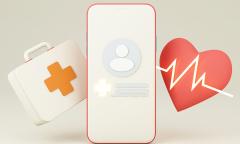Sometimes a person with epilepsy dies suddenly for no obvious reason. Sudden Unexpected Death in Epilepsy (SUDEP) is rare and there may be some things you can do to reduce your risk.
About SUDEP
For many people, epilepsy is a condition which can be well-managed and has little or no impact on their life. For others, ongoing seizures mean that epilepsy has a long-term impact on them. Like some other medical conditions, epilepsy is occasionally associated with premature death in some people, although this is rare. SUDEP is when someone who has epilepsy dies suddenly and no other cause of death can be found.
There are over 600,000 people with epilepsy in the UK. Approximately 1 in 1,000 people with epilepsy lose their lives to SUDEP every year. The percentage of the population affected by SUDEP is relatively low, and there are things that can be done to reduce risk.
SUDEP is a research priority for Epilepsy Society, and researchers have made an important breakthrough in discovering that an individual’s genetic makeup may contribute to the risk of SUDEP.
SUDEP can be upsetting or worrying to think about. Knowing about SUDEP, and the risks around seizures, might help you to work out what risks apply to you, and how to reduce them so you can feel more in control.
Why does SUDEP happen?
It is not clear why SUDEP happens. Because SUDEP is thought to happen either during or following a seizure, it is possible that it is due to a problem with the person’s heart, or breathing, during or following the seizure.
The risk factors around SUDEP
It is worth remembering that the risk of SUDEP varies from one person to another but some of the risks around SUDEP can be reduced.
We don’t know why SUDEP happens, but some situations are thought to make it more likely in
certain people:
- As SUDEP is thought to happen during or following a seizure, uncontrolled or poorly controlled seizures are a risk, particularly tonic clonic seizures.
- SUDEP is thought to be more likely in people with frequent seizures, particularly tonic clonic seizures, than in people with infrequent seizures.
- Not taking your anti-seizure medication regularly, as prescribed by your doctor, can trigger seizures which can lead to a higher risk of SUDEP.
- SUDEP often happens at night which suggests that you may be at higher risk of SUDEP if you have asleep seizures.
- You may be at higher risk of SUDEP if you live alone.
- The risk of SUDEP is higher in people with a history of alcohol dependency and/or substance misuse disorder.
- Sleeping on your front, in the prone position, may put you at higher risk.
Reducing risk
As SUDEP is thought to be linked to seizures, getting the best seizure control possible may be a way to reduce risks, including accidents, injury, and SUDEP.
Taking anti-seizure medication (ASM) as prescribed and around the same time or times each day can help with seizure control.
If you have difficulties taking your medication (for example, if you find it difficult to remember to take it), aids such as pill boxes or drug wallets might be helpful.
Find out what to do in advance if you forget to take your ASM, or what to do if you are sick or have diarrhoea after taking it.
Keeping a diary of when your seizures happen will help to show if there is a pattern to your seizures or if certain situations trigger your seizures (like being tired or stressed). It might also be helpful to see how well medication is working to control your seizures.
If you are still having seizures, having a review of your epilepsy and treatment with a neurologist or epilepsy nurse might be helpful. There may be changes to your treatment that would help to reduce the number of seizures you have.
SUDEP and sleep
SUDEP often happens when the person is asleep. If you have seizures during sleep, having a seizure alarm that alerts someone who can help if you have a seizure in bed might be helpful.
SUDEP and living alone
If you live alone and have seizures, depending on how your epilepsy affects you, you can contact your local council to ask for a health and social care assessment. If the assessment identifies needs which meet the local authority's criteria, then they have a duty to arrange relevant community care services for you. These services may include adaptations to the home such as a personal alarm. You may need to pay some of the costs.
Talk to someone
If you are concerned about SUDEP, you can talk to your neurologist or epilepsy nurse about your risk as an individual, and how to lower the risk of SUDEP.
You can also talk to our helpline who offer information and time to talk
Further information
Cruse Bereavement Support
Charity offering bereavement support, information, and campaigning.
SUDEP Action
Charity raising awareness and offering support and counselling around SUDEP.
Epilepsy Society is grateful to Dr F J Rugg-Gunn, Consultant Neurologist and Honorary Associate Professor, Clinical Lead, Chalfont Centre for Epilepsy, who reviewed this information.
Information updated: April 2025. Review date: April 2027.
Download this information
For a printed copy contact our Helpline.
Investigating SUDEP through brain tissue
Understanding the complexities of the brain is key to understanding the causes of epilepsy and the impact of seizures on the brain. It is also pivotal in improving the diagnosis and treatment of epilepsy.
Living with epilepsy
Having seizures, or being told “you have epilepsy”, can affect people in different ways. This includes driving, sleep, work and travel.
Alarms and safety equipment
Some people with epilepsy find it helpful to consider safety aids or equipment that might help them with day-to-day life. For example, an alarm, or monitor, that can alert family or friends when someone has a seizure.
Safety and risk
If your seizures are controlled by treatment, your safety may not be affected. But if you continue to have seizures, safety may be an issue. Some safety issues may not be relevant to you or you may have your own ideas about what would make situations safer for you. Here are some suggestions to help you think about your safety at home.

Epilepsy Society's confidential helpline is available for anyone affected by epilepsy.
Call us on 01494 601400. You can also reach us by email helpline@epilepsysociety.org.uk or chat with us online.




